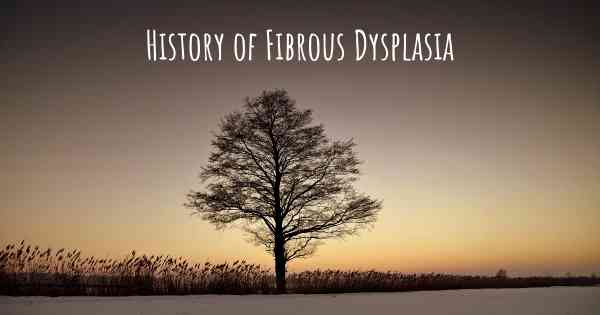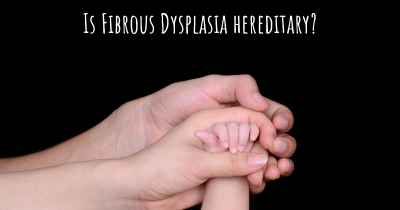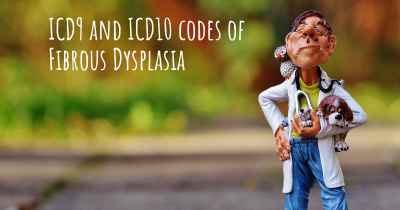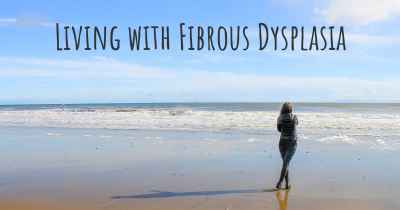What is the history of Fibrous Dysplasia?
When was Fibrous Dysplasia discovered? What is the story of this discovery? Was it coincidence or not?

Fibrous dysplasia is a rare bone disorder that affects the growth and development of bones. It was first described in medical literature in the mid-19th century by a French physician named Jean Cruveilhier. However, the condition was not well understood until later research shed more light on its causes and manifestations.
The history of fibrous dysplasia can be traced back to the late 1800s when Cruveilhier observed abnormal bone growth in several patients. He noted that the affected bones appeared to be replaced by fibrous tissue, leading to deformities and fractures. Cruveilhier named this condition "fibrous dysplasia" to reflect the fibrous nature of the tissue and the abnormal development of bone.
Over the next century, further studies were conducted to better understand fibrous dysplasia. In the early 20th century, researchers began to recognize that the condition could affect multiple bones in the body, leading to a more generalized form known as polyostotic fibrous dysplasia. This form was found to be more severe and often associated with endocrine abnormalities.
In the 1940s, a significant breakthrough occurred when researchers discovered a link between fibrous dysplasia and hormonal imbalances. They found that certain endocrine disorders, such as precocious puberty and hyperthyroidism, were frequently present in patients with fibrous dysplasia. This discovery provided valuable insights into the underlying mechanisms of the condition.
Throughout the latter half of the 20th century, advancements in medical imaging techniques, such as X-rays and CT scans, allowed for better visualization and diagnosis of fibrous dysplasia. These imaging modalities revealed the characteristic bone lesions and helped differentiate fibrous dysplasia from other bone disorders.
In the 1990s, researchers made a significant breakthrough by identifying a genetic mutation associated with fibrous dysplasia. They discovered that a mutation in the GNAS gene was responsible for the majority of cases of fibrous dysplasia. This gene mutation leads to the overactivation of certain signaling pathways, resulting in abnormal bone growth and development.
Since then, further research has focused on understanding the molecular mechanisms underlying fibrous dysplasia and developing targeted therapies. While there is currently no cure for fibrous dysplasia, treatment options aim to manage symptoms, prevent complications, and improve quality of life for affected individuals.
In conclusion, fibrous dysplasia has a long history of medical observation and research. From its initial description by Jean Cruveilhier in the 19th century to the identification of the GNAS gene mutation in the 1990s, our understanding of this rare bone disorder has significantly advanced. Ongoing research continues to shed light on the underlying causes and potential treatment options for fibrous dysplasia.
What Is Fibrous Dysplasia?
Fibrous dysplasia (FD) is a skeletal disorder in which bone-forming cells fail to mature and produce too much fibrous, or connective, tissue. Areas of healthy bone are replaced with this fibrous tissue. The replacement of normal bone in fibrous dysplasia can lead to pain, misshapen bones, and fracture, especially when it occurs in the long bones (arms and legs). When it occurs in the skull, there can also be a replacement of the normal bone with fibrous tissue, resulting in changes in the shape of the face or skull, pain, and, in rare circumstances, hearing or vision loss.
Some people with fibrous dysplasia have only one bone involved (monostotic), whereas other people have more than one bone involved (polyostotic). The disease may occur alone, or as part of a condition known as the McCune-Albright syndrome. McCune-Albright syndrome is characterized by fibrous dysplasia and other symptoms such as patches of pigmented skin (light brown or “café-au-lait” spots) and endocrine problems such as early puberty (precocious puberty), hyperthyroidism (excess thyroid hormone), excess growth hormone (gigantism or acromegaly), excess cortisol (Cushing’s syndrome), and other rare conditions.
Fibrous dysplasia can affect any bone in the body. The most common sites are the bones in the skull and face, femur (thighbone), tibia (shinbone), humerus (upper arm), pelvis, and ribs. Although many bones can be affected at once—and affected bones are often found on one side of the body—the disease does not “spread” from one bone to another; that is, the pattern of which bones are involved is established very early in life and does not change with age.
Posted Jun 9, 2017 by Lisa Hill 2050
Posted Jul 21, 2017 by Debra 2000
Posted Oct 7, 2017 by Kiesha brown 3050
I don't know the history, just researching right now. This condition was first described in 1942 by Lichtenstein and Jaffe hence, fibrous dysplasia is sometimes referred to as Lichtenstein-Jaffe disease.
Posted Oct 23, 2020 by anna_d09 2500








